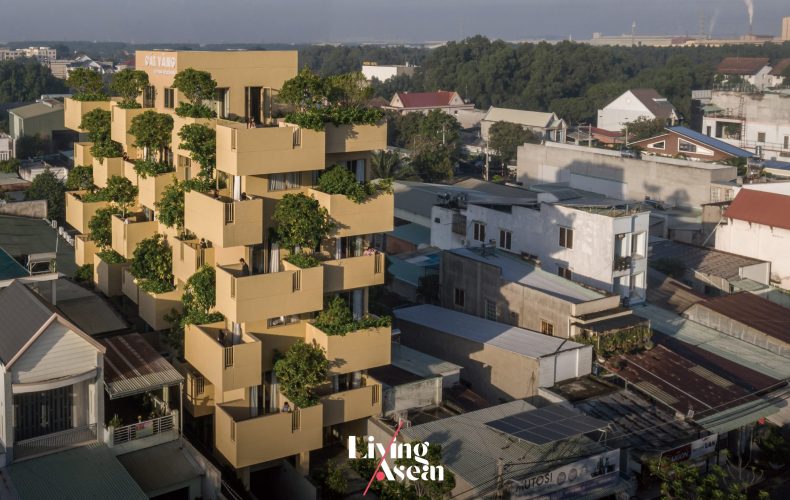/ Ba Ria-Vung Tau, Vietnam /
/ Story: Kor Lordkam / English version: Bob Pitakwong /
/ Photographs: Hoang Le /
The Flying Block is a hotel project in a class of itself. The low-rise, six-story tower in a beach-inspired sandy brown is located in the heart of Phu My, a town in Ba Ria-Vung Tau Province bordering on Ho Chi Minh City. Only recently the coastal province has grown to become one of Vietnam’s economic powerhouses with busy sea ports, factories and industrial estates. Also known as the Cay Vang Hotel, it’s festooned with lush green foliage on balconies that provides effective window treatments and reduces summer heat gain, keeping the interior cool and comfortable.


But why Phu My? The answer lies in location, location, location. Ba Ria-Vung Tau is also renowned for its rich ecosystems with lots of sunshine and great views plus tourist destinations attracting travelers from across the globe. So it’s all about being in the right place at the right time.
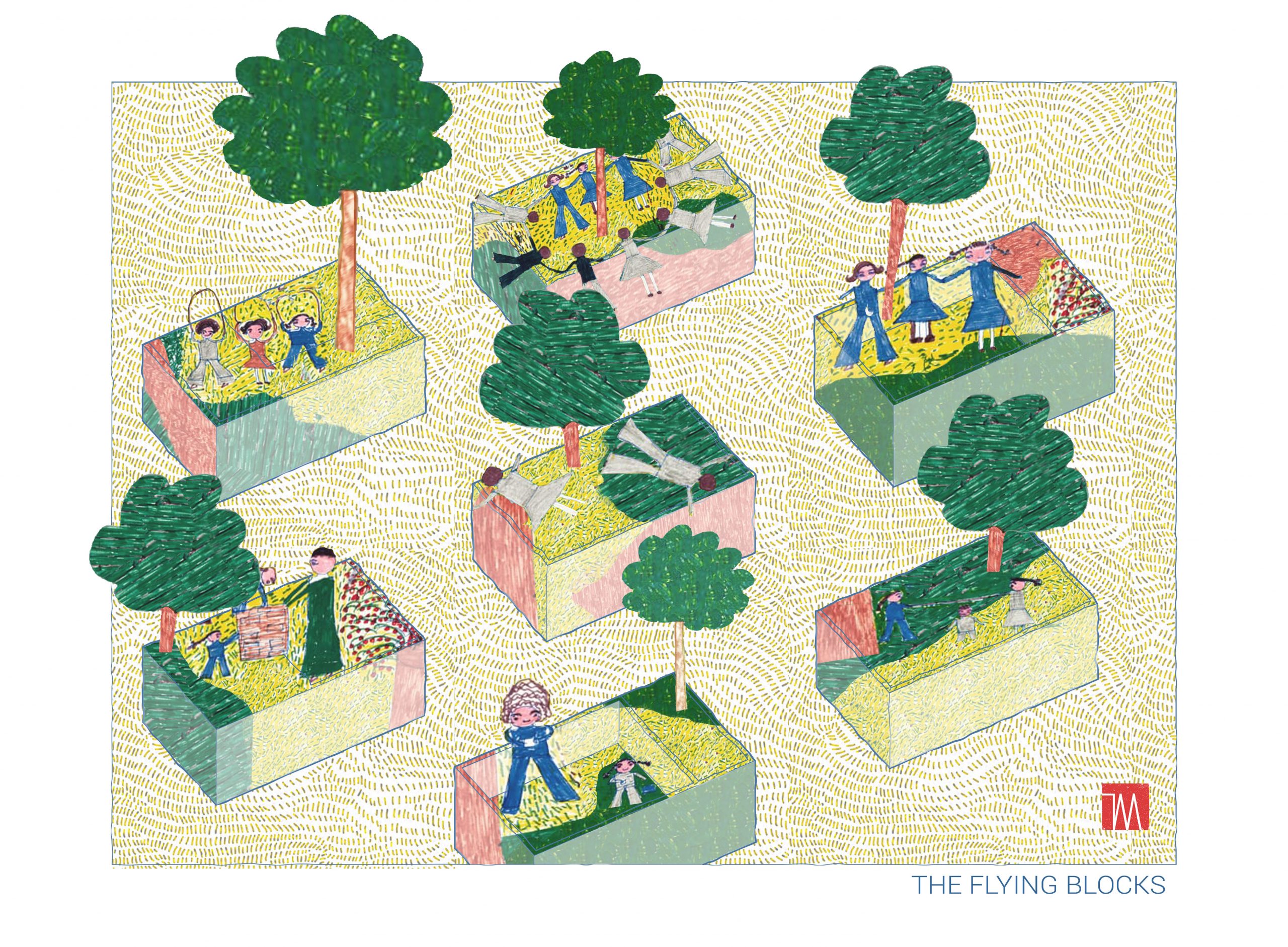


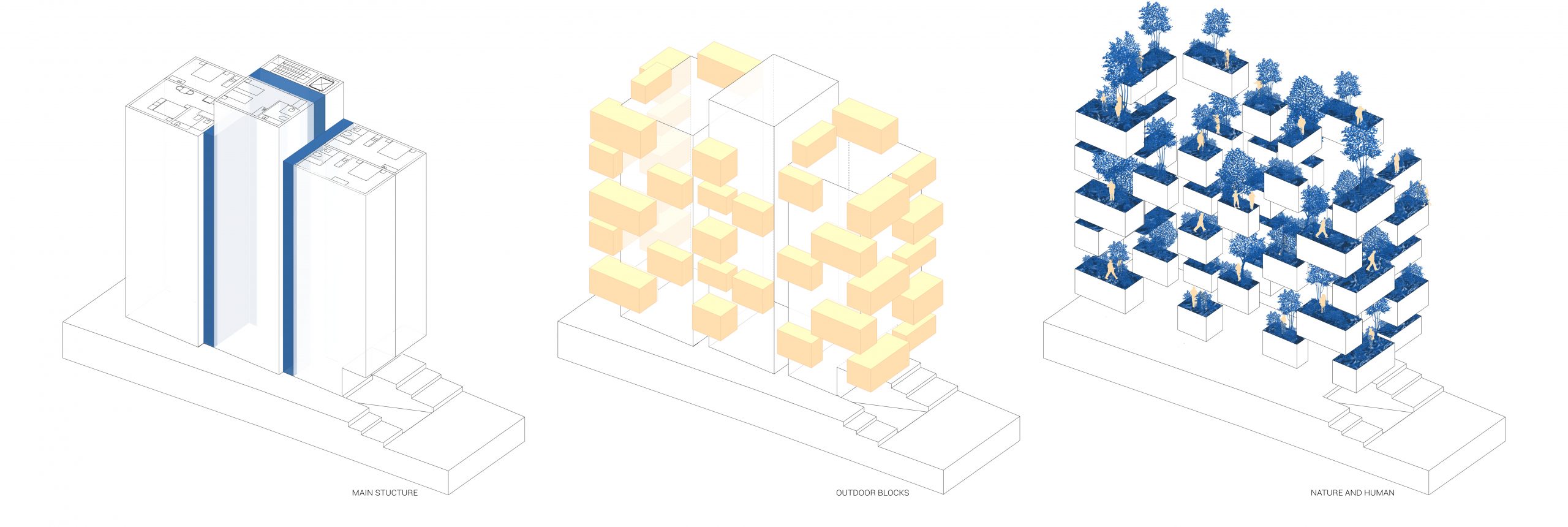
The main idea is that, with an increase in industrial activity, more housing demand and land becoming pricy, the only way to build now is upwards. At the same time, the natural environment must be preserved so as to enhance the quality of life, housing and lodging accommodations for locals as well as visitors.


The result is a tree-covered vertical living model aptly called the “Flying Greenery Blocks”. In essence, it’s the coming together of box-shaped balconies with trees secured firmly in ultra-deep planters. The rectangular platforms on the outside of the building vary in size from 2 to 3.5 meters wide.
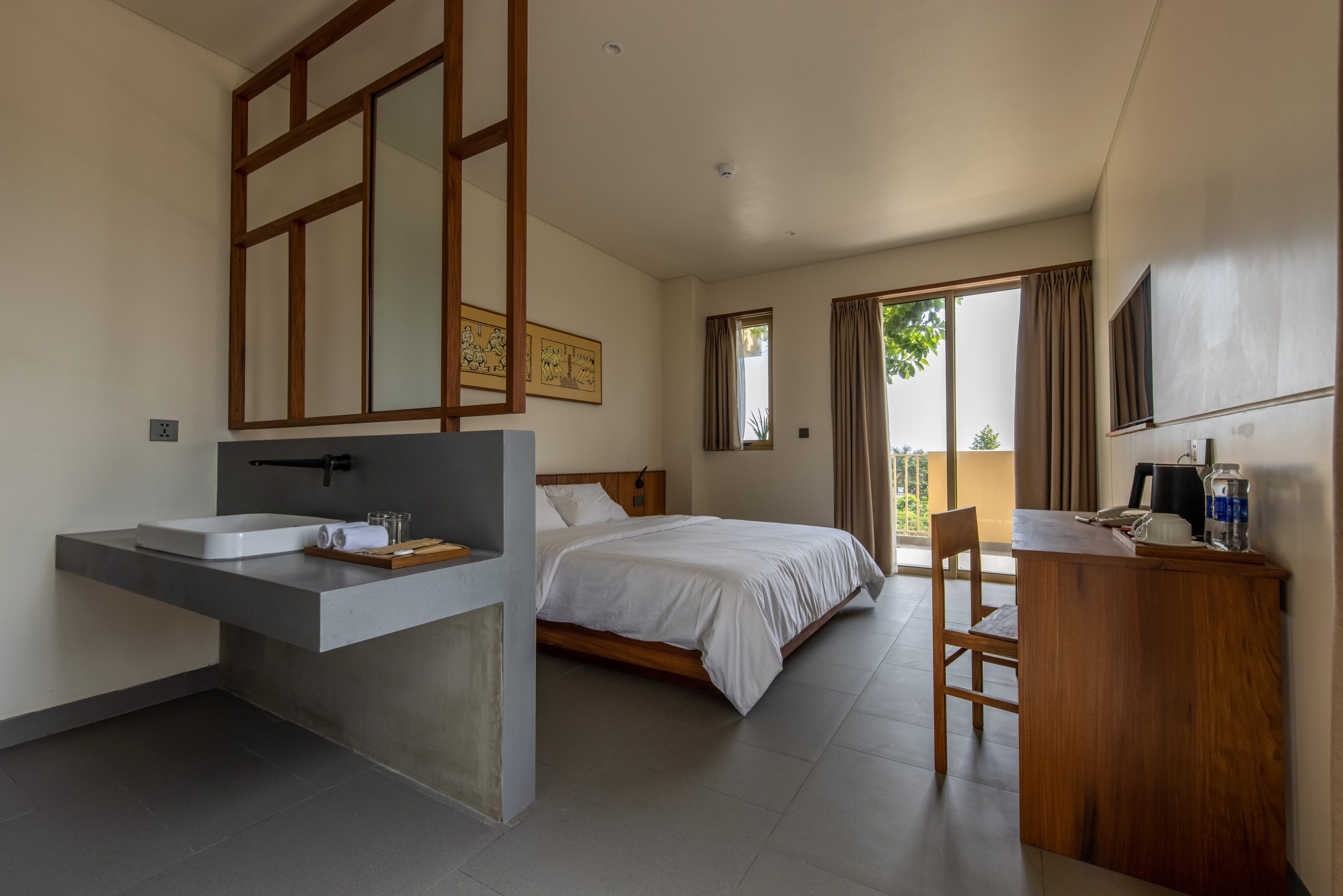

The extra-large balconies among them even have a trough for growing decorative plants at the edges. Together they serve multiple purposes, as a charming garden space for green thumbs, a place for physical fitness exercises and a landmark clearly visible from a distance.




Take a look inside, and you find a spacious hallway that’s a breath of fresh air. Uncluttered and arranged in an orderly way, it leaves a very good first impression.
Plus, the entryway feels light and airy, thanks to the stack ventilation effect that allows hot air to rise while low pressure draws fresh outdoor air into the interior. In a few words, there’s no lack of air circulation and hence no need for air conditioning.
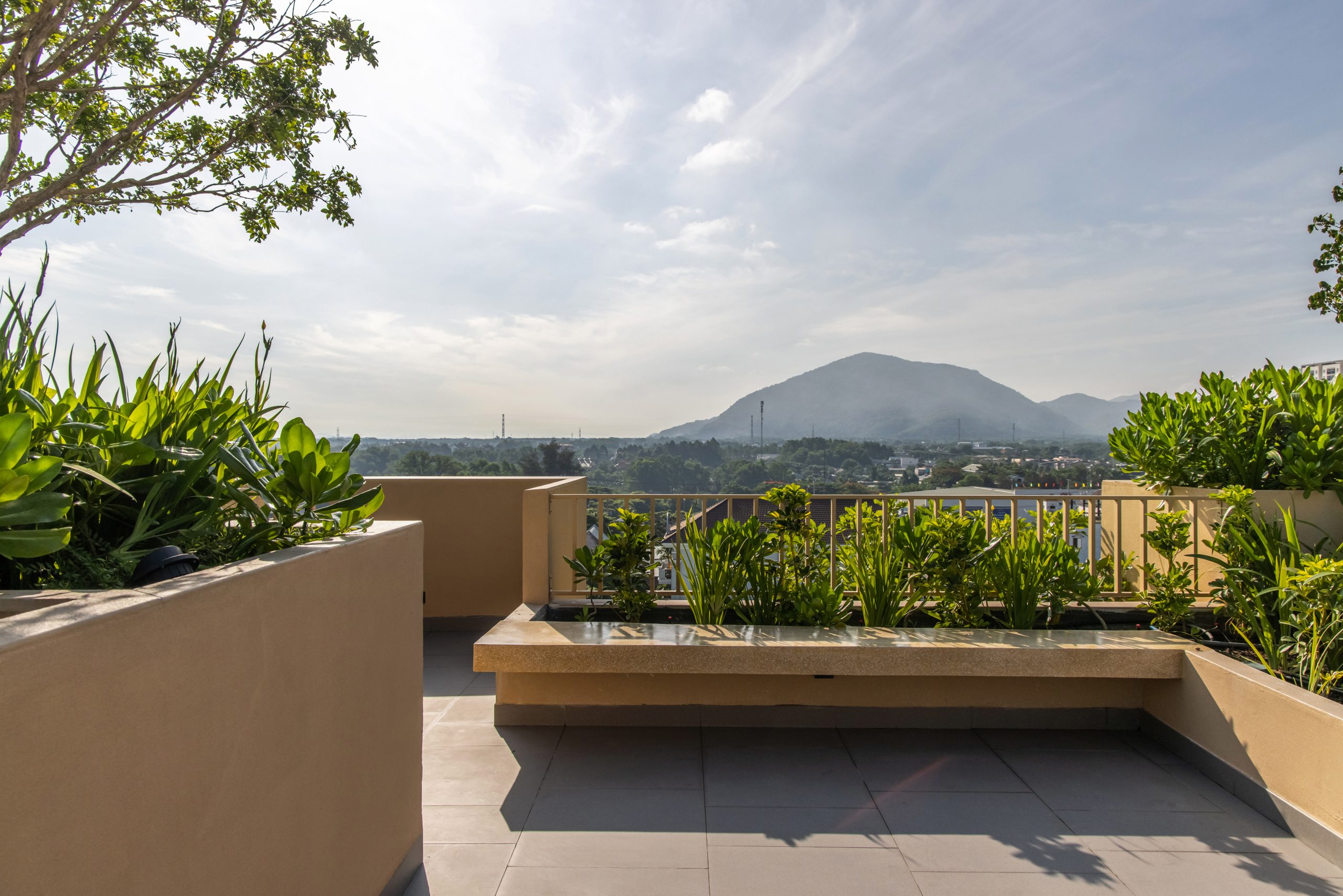
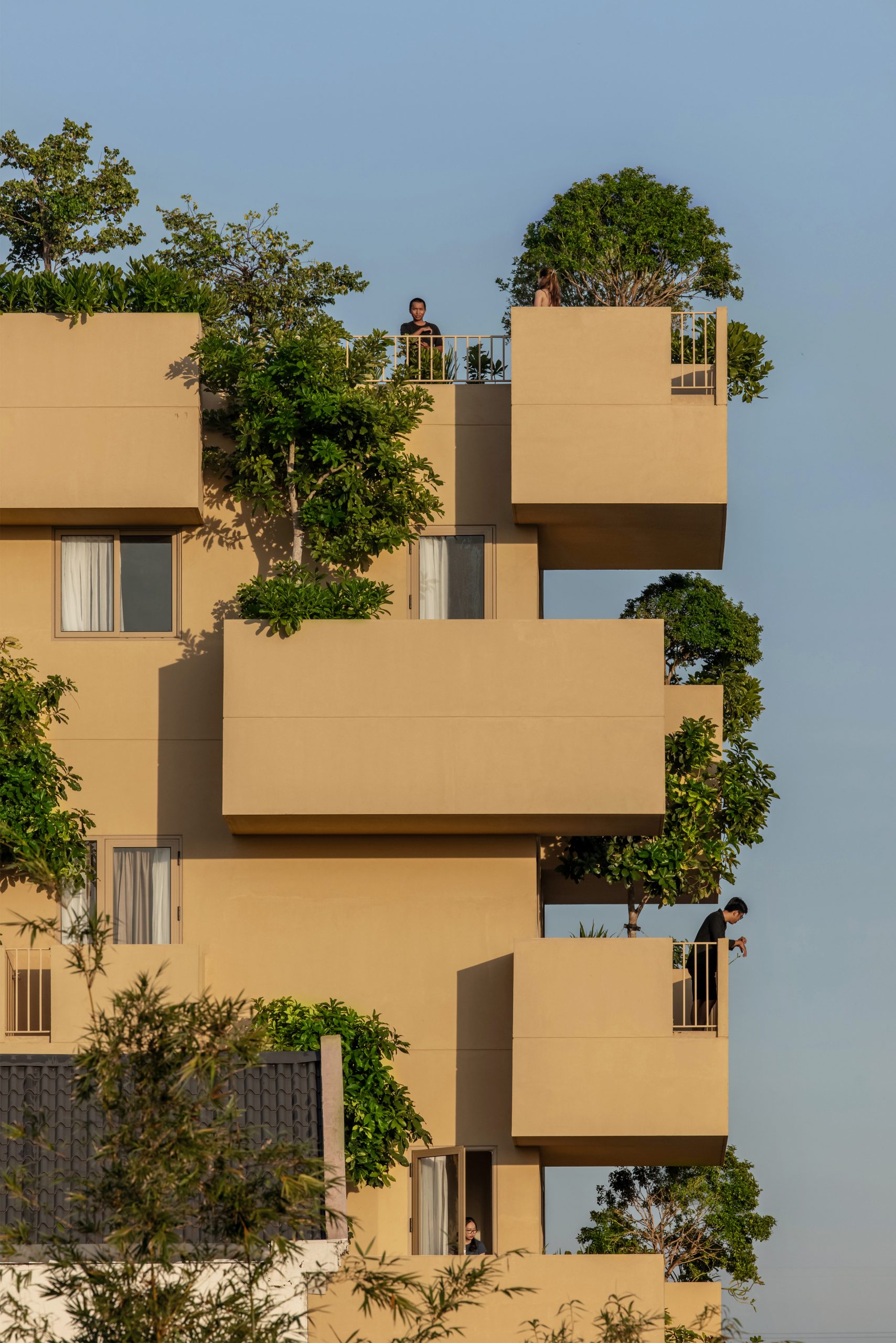

On the whole, it’s about integrating urban green spaces in modern design to create indoor thermal comfort all year round. Psychologically, it provides an escape from the hustle and bustle of the city undergoing fast economic development. The bottom line. Every greenery-filled space matters when it comes to improving the quality of life in an urban area.

Architect: TAA Design (taadesign.com)
Lead Architect: Nguyen Van Thien
Design Team: Nguyen Van Thien, Tran Anh Huy, Ngo Thi Bao Nhi
Constrution: Doricons
You may also like…
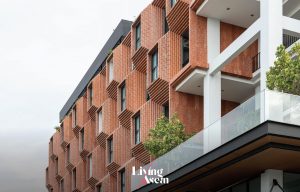 The Pusayapuri Hotel: Redefining U-Thong Architecture from a Modern Perspective
The Pusayapuri Hotel: Redefining U-Thong Architecture from a Modern Perspective
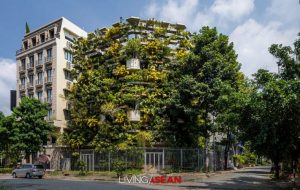 Urban Farming Office: VTN Architects’ Office Gives Back Lush Greenery
Urban Farming Office: VTN Architects’ Office Gives Back Lush Greenery

